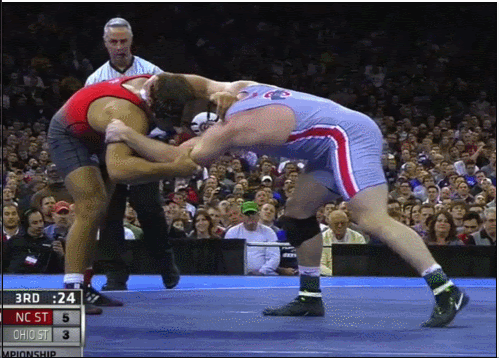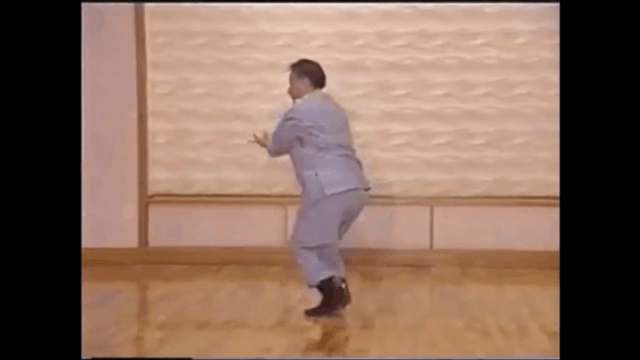
I am going to use the term PENG from chinese martial arts to describe weaponizing the natural elasticity in the body to strike, push or move. While I believe Taiji and many chinese styles particularly study this concept in martial arts more than others, they are far from the only ones to use it or talk about it. Until I find a better term however, I will use Peng.
I see the use of Peng in both striking and grappling, though I know only a few cerebral type martial artists to actually point out where and when it appears during applications or movements. Most people just say “Do this” and when the peng happens they say, “Now you’re doing it right.”
If I were to cover peng as a total concept, I could write a small dissertation, hardly worth it for a blog I barely edit for spelling and grammar.
Instead I’m going to talk about when you use the peng/elasticity of your own enemy against them.
It’s not something many people really think about, the closest is parlour tricks Taiji people do when they practice push hands or demonstrations. The person pushing often uses their own and their opponents ‘springs’ to send them flying. But many then try to do the same against resisting partners or in free fighting, and while often they can weaponize their own elasticity, they find it difficult to use their opponents springs against them unless doing push hands. But that’s the problem, their only reference is pushing drills.
It’s not a bad reference, while ‘parlour’ trick is isn’t entirely inaccurate, the point of such demonstrations is not to teach a fighting technique(Though explosively pushing someone into traffic or a wall is useful) but to simply show us the very existence of this concept. The demonstration of Peng is meant mostly to teach. Many internal martial arts practitioners look for fighting application in Yilu, but I found it more useful as a tool to discover how to move and feel the dynamics of the body (Peng in particular) than fighting techniques. Now my own Taiji teacher does sometimes say ‘look at this application for Yilu’, but he mostly it’s a teaching tool than a system of fighting, which is why I train with him instead of other internal martial arts teachers (That and familiarity).
And just as the form is a teaching tool, so are the push hands drills and competitions, one should not expect to have the same dramatic results against a resisting opponent unless the stars line up perfectly. Now many do think this is how violence will unfold, internal martial arts is well known to have students way to compliant, almost giving teachers a mystical status. I can understand why, when one is first exposed to their teacher sending them flying with a small motion, it can seem mysterious. That’s why otherwise good internal martial arts teachers will show a concept, but it’s difficult to tell if the concept is good or if the students are reacting too strongly due to being in awe of the master.


One could on impulse make fun of the people in these GIF pictures, both the master and student. But I’ve been there with my karate and Taiji teacher, been so compliant that I reacted in over the top ways. Sometimes it happens unintentionally, this is a pitfall of martial arts focussed on subtle mechanics.
But just because of these pitfalls doesn’t mean these drills are bad. We just must realize that everything is much more subtle in a real fight, less big, less dramatic. But that’s okay, because fights can be decided in millimeters, small little steps, small little factors. Sometimes things we can’t even see going on within an opponents mind or body.

The above snapshot looks nothing like the tai chi man sending his opponent flying with a push, yet it’s exactly the same concept.
The snap down is often thought of as a feint in wrestling, you pretend to snap them down, they resist and go up, so you shoot for a double leg. One would think like most feints, if someone knows what you’re doing it doesn’t work.
Yet I can literally tell my students or partners that I am going to do a snap down, and yet I still get a double leg or ankle pick.
Why?
Because if they resist being snapped down, their own body creates a spring. The moment they resist I release it, and they pop up leaving them open for a double leg. They can know I am going to do this, yet their own body will create the spring the moment they resist.
If they do not give me the spring, I have them off balance and I ankle pick them. Win/win for me.
They only way it stops is if they shuck my neck tie or break my grip on their gi.

Another grappling application is to grip and drop, causing the person to spring as they regain their balance, putting them in motion and therefore causing them to react and over reach.

And yes, you can push people. But unless you catch them off guard with a big explosion, it will look like this. It may not look explosive like Peng Taiji demonstrations, but only because the other guy is doing it back. I’ve played with sumo pushing, watched videos of them drilling pushing. They are using what chinese martial arts call peng, and if you drive once, you can keep going and doing a consistent bounce sending them into a wall or out of the ring.
But the application is not like the Taiji clip all the way above with Chen Man Ching, but a consistent jack hammer of pushes that keeps the opponent off balance or if they are covering, moves or disrupts the guard. It’s like a constant explosion of peng rather than a single burst.
The striking application to this I have no picture for.
There is a concept I was taught by my Karate teacher over the last three years called ‘concentric expansions’ related to ‘threading the nine pearls’ which is a way to express every join as either an expansion along a line or from a rotation. The movement can be seen in many kung-fu forms, and many boxers will do it when punching through someone’s head or body like a stab.

Thing is, this punch can be done as a push which creates the peng from both your body and your opponents to knock them down or send them flying, or you can pop it like a proper punch and either hurt them without using their peng, or they tighten up when you hit the chest or stomach and they bounce. Again it’s not a dramatic bounce, it’s often nothing like taiji or hsing I demonstrations unless your timing is really good or you really catch someone off-guard.
The closest thing to an image I could find of it’s effects is Bruce Lee sending someone flying with a side kick. Yes his power has the guy off balance, but the guy also bounces.

Even this is not quite what I am talking about.
But use your imagination you fucking assholes.